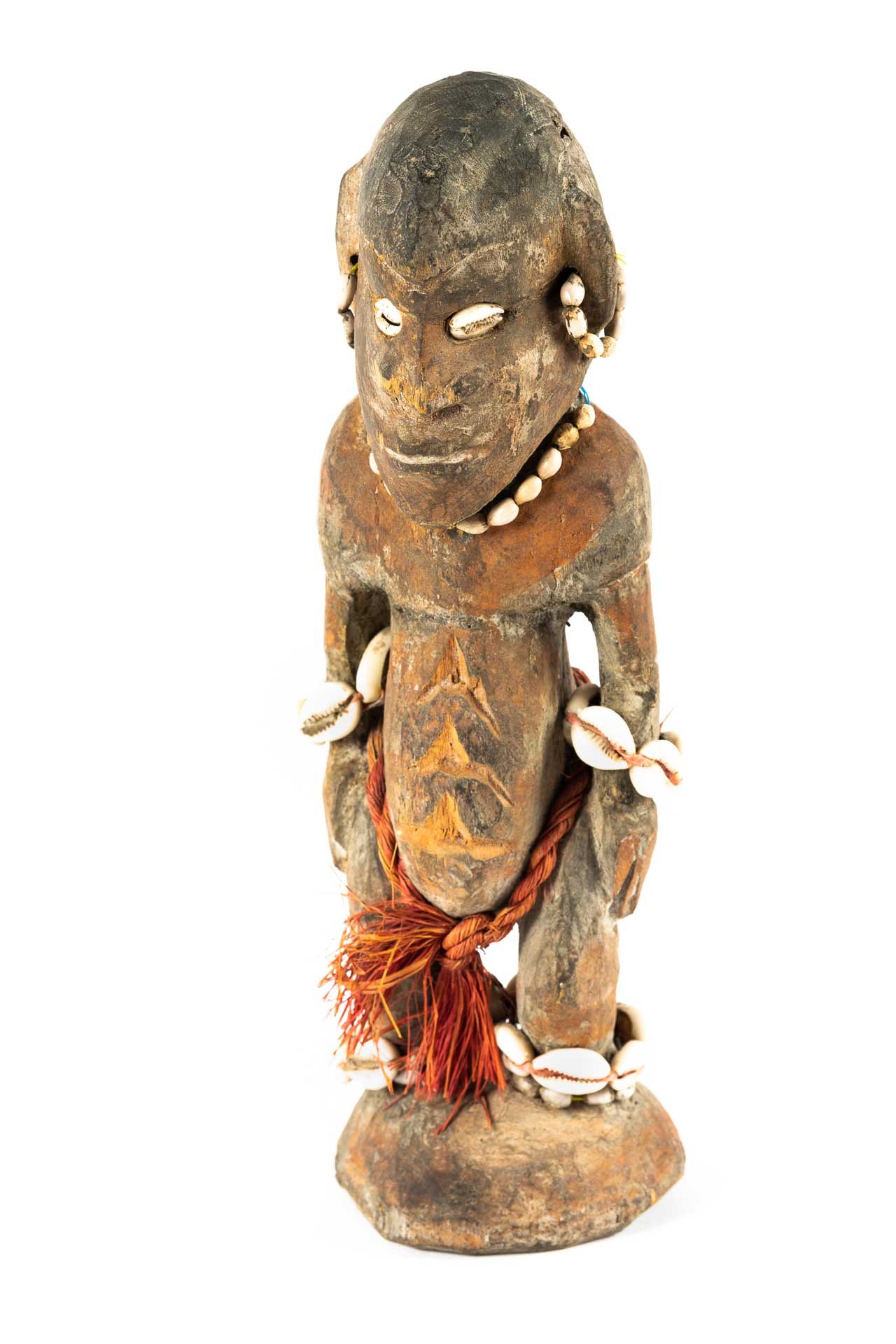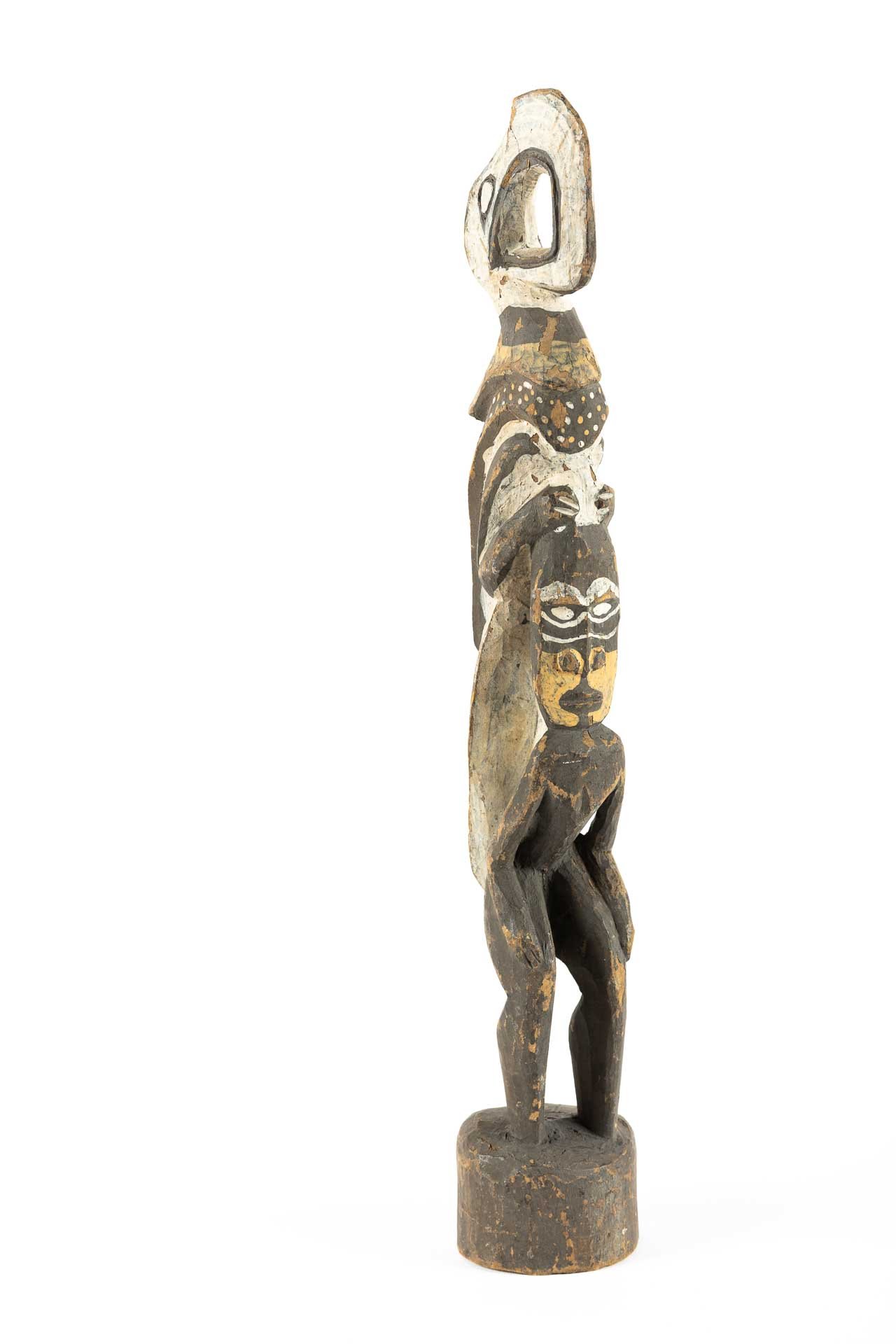Iatmul people, Papua New Guinea, 20th century
Fiber
Gift of the Dr. Alan & Linda Rich Collection
Huli people, Papua New Guinea, 20th century
Shell, string
Gift of the Dr. Alan & Linda Rich Collection
Huli people, Papua New Guinea, 20th century
Shell, string
Gift of the Dr. Alan & Linda Rich Collection
These hand-woven, netted string bags are used to carry a wide range of items such as food, supplies, and personal belongings. They are common throughout Papua New Guinea.
Iatmul people, Papua New Guinea
Fiber, string
c. 20th century
These hand-woven, netted string bags are used to carry a wide range of items such as food, supplies, and personal belongings. They are common throughout Papua New Guinea.
Iatmul people, Papua New Guinea, c. 20th century
Fiber, string
These hand-woven, netted string bags are used to carry a wide range of items such as food, supplies, and personal belongings. They are common throughout Papua New Guinea.
Iatmul people, Papua New Guinea
Fiber, string
c.20th century
These hand-woven, netted string bags are used to carry a wide range of items such as food, supplies, and personal belongings. They are common throughout Papua New Guinea.
Iatmul people, Papua New Guinea
Fiber, string
c.20th century
The Iatmul people espouse a firm connection with a religion that dominates all aspects of their daily and ritualistic lives, often referred to as “the life force.” Cult statues such as these represent ancestors and their life force spirits.
Iatmul people (Papua New Guinea), 20th century
Wood
Gift of the Dr. Alan & Linda Rich Collection
The Iatmul people espouse a firm connection with a religion that dominates all aspects of their daily and ritualistic lives, often referred to as “the life force.” Cult statues such as these represent ancestors and their life force spirits.
Iatmul people (Papua New Guinea), 20th century
Wood
Gift of the Dr. Alan & Linda Rich Collection
The Iatmul people espouse a firm connection with a religion that dominates all aspects of their daily and ritualistic lives, often referred to as “the life force.” Cult statues such as these represent ancestors and their life force spirits.
Iatmul people, Papua New Guinea, 20th century
Wood
Gift of the Dr. Alan & Linda Rich Collection
Huli people, Papua New Guinea, 20th Century, shell, string, fiber
Gift of the Dr. Alan & Linda Rich Collection
Kina shells are valuable to the Sepik River peoples, so much so that they are even used as currency. Each of these pectoral necklaces is decorated with small holes along its inner ring to accentuate the shape of its decorative shells
Huli people, Papua New Guinea, 20th century, shell
Gift of the Dr. Alan & Linda Rich Collection
Cowrie shells serve both functional and artistic functions in Papua New Guinean culture. While the shells are used commonly as currency, they are also employed frequently as creative details for works of art. Indeed, given their shape and appearance, cowrie shells often represent eyes in masks and other sculptures.
Huli people, Papua New Guinea, 20th Century, shell, string
Gift of the Dr. Alan & Linda Rich Collection
Cowrie shells serve both functional and artistic functions in Papua New Guinean culture. While the shells are used commonly as currency, they are also employed frequently as creative details for works of art. Indeed, given their shape and appearance, cowrie shells often represent eyes in masks and other sculptures.
Huli people, Papua New Guinea, 20th Century, shell, string
Gift of the Dr. Alan & Linda Rich Collection
Cowrie shells serve both functional and artistic functions in Papua New Guinean culture. While the shells are used commonly as currency, they are also employed frequently as creative details for works of art. Indeed, given their shape and appearance, cowrie shells often represent eyes in masks and other sculptures.
Huli People, Papua New Guinea, 20th Century, Shell, String
Gift of the Dr. Alan & Linda Rich Collection
Iatmul people, Papua New Guinea, 20th century
Shell, feather, resin
Gift of the Dr. Alan & Linda Rich Collection
Iatmul people, Papua New Guinea, 20th century
Wood
Gift of the Dr. Alan & Linda Rich Collection
Huli people, Papua New Guinea, 20th century
Bone, string
Gift of the Dr. Alan & Linda Rich Collection
Iatmul people, Papua New Guinea (Oceania), 20th Century
Wood
Gift of the Dr. Alan & Linda Rich Collection
This mask, also known as a Helmet or Dream mask, is worn atop the head and has no eyeholes. With its prominent elongated and arched nose, the mask’s features are characteristic of Sepik river masks. Often worn ceremonially, masks like these represent and seek to honor specific mythical ancestors and supernatural siblings. This mask was a gift to the Riches from a grateful Iatmul chief.
Iatmul people, Papua New Guinea, c. 20th Century
Rattan, wood, fiber
Gift of the Dr. Alan & Linda Rich Collection
Unknown Artist, Papua New Guinea, 20th century
Beads
Gift of the Dr. Alan & Linda Rich Collection
Unknown Artist, Papua New Guinea, 20th century
Black coral and metal
Gift of the Dr. Alan & Linda Rich Collection
Unknown Artist, Papua New Guinea, 20th century
Tortoise shell
Gift of the Dr. Alan & Linda Rich Collection
Unknown Artist, Papua New Guinea, 20th century
Tortoise shell
Gift of the Dr. Alan & Linda Rich Collection
Huli Wigmen, Papua New Guinea, 20th century
Wood
Gift of the Dr. Alan & Linda Rich Collection
Iatmul people, Papua New Guinea, 20th century
Fiber and string
Gift of the Dr. Alan & Linda Rich Collection
Iatmul people, Papua New Guinea, 20th century
Fiber
Gift of the Dr. Alan & Linda Rich Collection
The Iatmul people espouse a firm connection with a religion that dominates all aspects of their daily and ritualistic lives, often referred to as “the life force.” Cult statues such as these represent ancestors and their life force spirits.
Iatmul People, Papua New Guinea, 20th Century, Wood
Gift of the Dr. Alan & Linda Rich Collection































